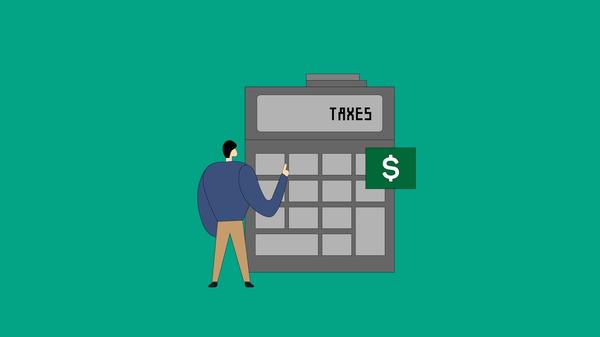In this article, we’ll cover what rebalancing is, how often you should rebalance, different ways of rebalancing your portfolio, and financial implications you should consider when rebalancing your portfolio.
If you’re the impatient type, here are the three essential steps to rebalancing your investment portfolio:
- Decide on your asset allocation (eg, 60% equities and 40% fixed income) based on your risk tolerance and investment horizon.
- Decide when you’ll rebalance (ie, based on a certain frequency or portfolio drift percentage).
- Stick to your plan. Rebalance using new cash where possible for efficiency, and rebalance through selling only after considering any associated trading fees and tax implications (eg, capital gains tax).
Now let’s dive in a bit deeper.
When you first created your investment portfolio, you hopefully determined what asset allocation would be best for you—meaning, what proportion of your portfolio would be made up of equities (such as stocks) and what proportion would be fixed income assets (such as bonds).
A classic “balanced” portfolio is 60% equities and 40% fixed income, while others suggest using this rule of thumb: your proportion of fixed income assets should be whatever your age is. For example, according to this rule of thumb, a 30 year old would have 30% of their portfolio in fixed income assets.
Whether that’s the right starting point for you will depend on various factors, including your risk tolerance and investment horizon.
After some self-reflecting and research, you decide on the right allocation for you, buy your chosen assets in your desired proportions and then... the values of these assets start to change and your portfolio’s proportions are out of whack. What now?
It’s time to rebalance your portfolio.
What is rebalancing?
Whatever your chosen allocation (50/50, 60/40, 70/30, etc), rebalancing simply means bringing your portfolio allocations back in line with your target. There are two main ways to do this, both of which will be covered below.
If you stick to your investment plan, you should rebalance your portfolio back to your target allocation at regular intervals. What constitutes a “regular” interval is different for everyone, but more on that later.
Why would you need to rebalance?
When you first chose your investment allocation, you hopefully decided on that split based on some combination of your risk tolerance and investment horizon.
The fact is though, not all assets will change value at the same rate. Over the long term, equities have historically had a higher average return than fixed income assets: more risk = more (potential) reward. This means that, after a stock market runup where equities have increased in value, your portfolio allocation may be too skewed toward equities.
On the other hand, while stocks outperform bonds over the long term, bonds tend to do better during stock market crashes—they usually even increase in value as money moves from volatile stocks to the relative safety of bonds.
However, this is actually the best time to move your money in the opposite direction. If the stock market is down 40%, like it was in March 2020, you should consider taking advantage of this massive discount and rebalancing your portfolio back to your target allocation.
Why is rebalancing helpful for investors?
It’s important to note that rebalancing is not guaranteed to bring you the highest possible returns, but it helps you manage risk and your emotions, which could derail your investment plan entirely.
It can be emotionally challenging to sell your best-performing assets to buy more of your worst-performing assets. But past performance does not indicate future results. If you’ve chosen a 60/40 portfolio based on your appetite for risk and investing timeframe, and it’s now closer to 80/20, you’ll be in for a nasty surprise and some potentially sleepless nights if the stock market drops by, say, 40% in the span of a month like it did in March 2020.
Our brains can get a little weird when it comes to the stock market. When we see an asset performing well, we want to hold on to it because we think it will keep going up. When an asset isn’t doing so great at the moment (for example, airline and entertainment stocks during the COVID-19 pandemic), people tend to shy away from it, even though this effectively means these assets are on sale.
Rebalancing forces you to sell high and buy low—even when your irrational brain is telling you to sit tight—and that’s exactly what you need to do to make a profit on the stock market!
How do you rebalance your investment portfolio?
There are two main ways to rebalance your portfolio:
- Sell some of your overweight assets and use that cash to buy underweight assets.
- Contribute to your investment portfolio consistently and keep buying the underweight assets.
Rebalancing purely through new contributions is more easily achieved when your portfolio is smaller. It’s a useful strategy because it allows you to avoid possibly paying two trading commission fees, one to sell and one to buy.
Instead, you’ll just need to pay the buy commission—and some brokerages (like Questrade) have no commission fees for ETF purchases, so you could potentially go a very long time without paying trading fees. By “rebalancing” in this way throughout the year (hopefully with every paycheck!), you’ll have less need for a “full” rebalance.
Rebalancing sounds complicated - is there another way?
It’s true that the traditional way of rebalancing is tedious—you may start to dream of spreadsheets.
You could choose to go through a bunch of steps involving manually customizing and filling in a spreadsheet. After that, you’ll have to manually enter in the ticker code, desired sell or purchase price per units, and number of units you want to buy or sell...
...or you could just have Passiv do the calculations for you automatically, and click one button to have Passiv execute the necessary trades for you. Before the trades are executed, you’ll see a breakdown of any commission or trading fees involved, as well as how much cash will be left in your account after the trades.
Passiv works by connecting to your brokerage account through a secure API and makes portfolio management a breeze for DIY investors.
How often should you rebalance?
How often you do a “full” rebalance is up to you. Once per year is often suggested, but maybe you prefer to rebalance quarterly, every two years, or whenever your portfolio allocation drifts by a certain percentage (say, 5%).
Normally, this would mean you’d need to keep a close eye on your portfolio and constantly check if it’s out of balance.
Instead, you can sign up with Passiv, which will send you portfolio drift notifications if your accounts get out of balance—and you can pick the drift percentage that triggers a notification (or turn them off entirely if you prefer frequency rebalancing).
Passiv will also send you cash notifications when money hits your account, whether in the form of dividends or contributions, so you’ll know it’s time to login and execute trades quickly and painlessly with Passiv’s one-click trades feature.
What are the financial implications of rebalancing?
If the account you’re rebalancing is not tax-advantaged, you may be on the hook for capital gains taxes for any assets you sell. The less you sell, the lower your taxable amount. In Canada, half the value of any capital gains is taxed at your marginal rate (meaning, your highest personal tax rate).
By using Passiv, which calculates only Buy trades by default, you’ll save on trading fees and avoid triggering capital gains unneccessarily. And if you ever need to do a “full” rebalance, you can turn on Sell calculations and rebalance your portfolio in seconds.
Passiv makes portfolio management easy
Passiv’s automated calculations are especially helpful if you have complex investments.
For example, maybe you’ve got your assets in different types of accounts for tax efficient investing. If this is the case, you likely treat your portfolio (across all accounts) as one big pot. With Passiv, you can group these accounts together and Passiv will keep you balanced across all of them.
Or maybe you manage your entire family’s accounts or invest in multiple currencies. Either way, Passiv has the tools to help you manage your portfolio and will automatically calculate rebalancing trades for you.
If you follow the Canadian Couch Potato portfolio, you could always use their spreadsheet to rebalance. Of course, that involves manually typing in details about each of the assets in all your accounts and then manually typing numbers into your brokerage’s interface to place trades one by one by one.
Instead, just automate your Canadian Couch Potato portfolio with Passiv and enjoy automatic calculations and one-click trade execution.
Passiv goes a step further and also tracks your performance. The Reporting tab shows you your average monthly dividends, total dividend income, contribution history, and investment gains. If you’re interested in building a dividend income over the years, this is a great way to track your goals along the way.
Whether you choose to rebalance at a certain frequency, or when your portfolio gets a certain amount out of balance, Passiv can help you keep your portfolio on target painlessly in under a minute. Get started with Passiv today and see how easy portfolio management can be.


